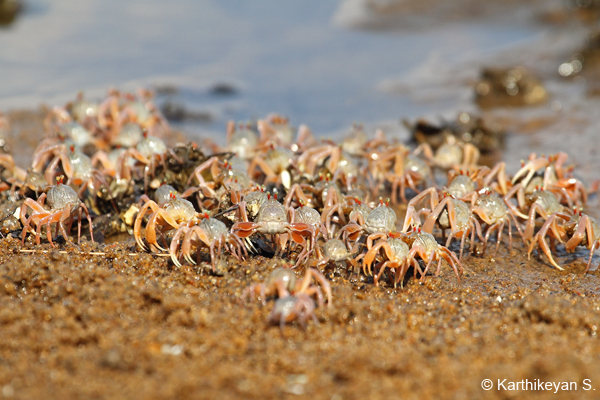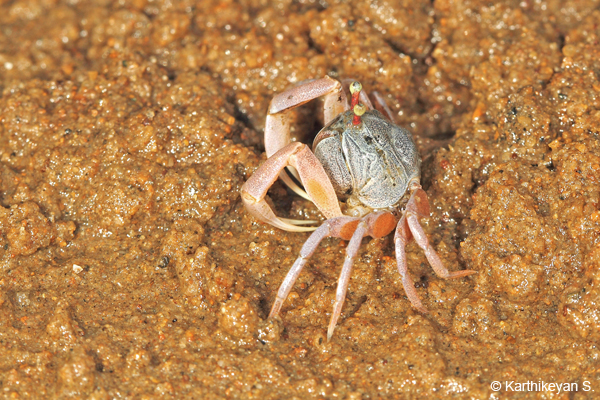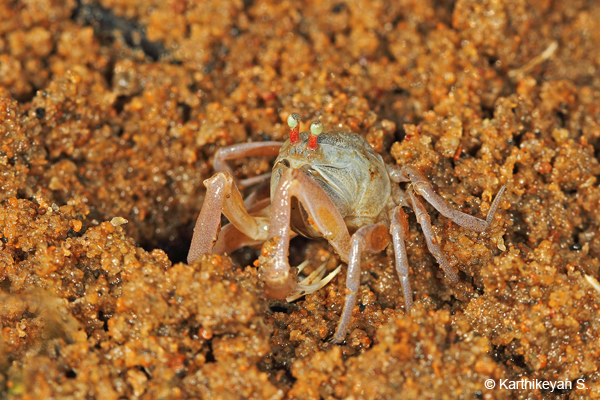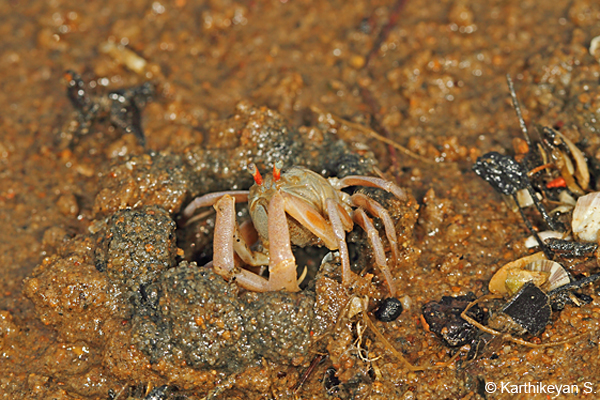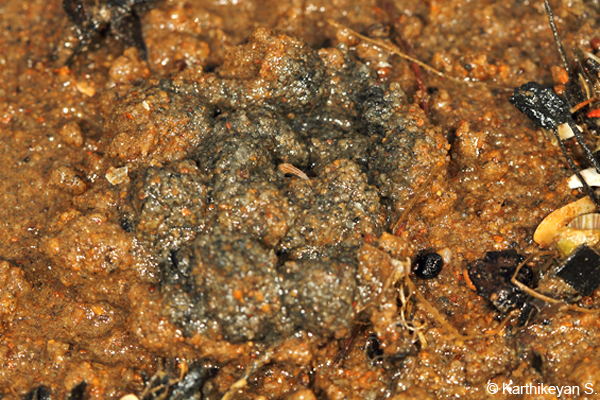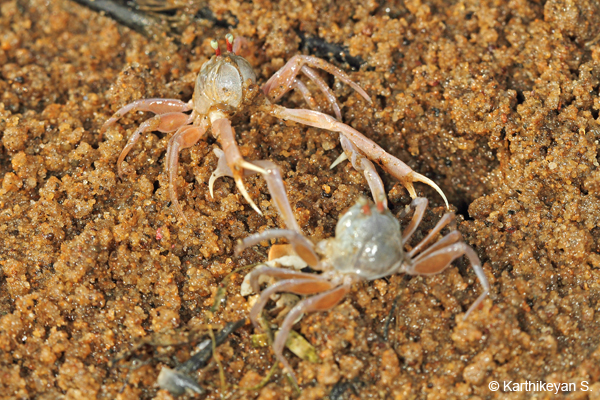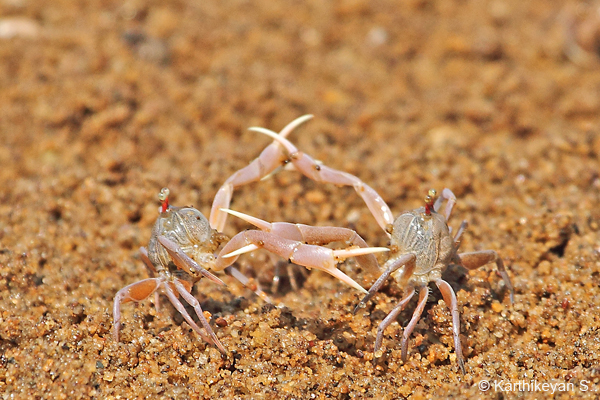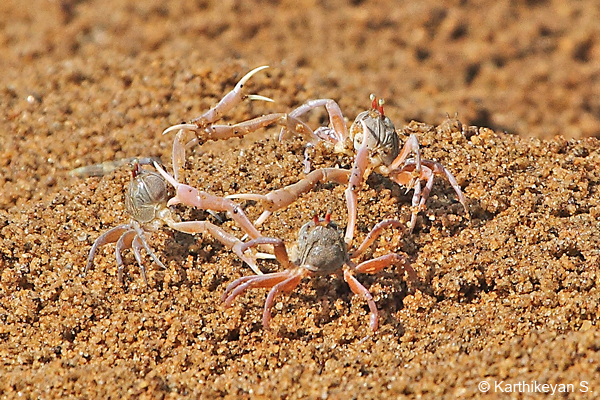From a distance, you see a grey mass marching up the shore like an army on a mission. Get close and you see their body clothed in grey armour, propped upon pink legs.
Get closer and you realise that they are small round crabs, each about the size of a marble – complete with their greenish eyes on red stalks! It is this habit of marching in large groups that gives these crabs their common name – Soldier Crabs Dotilla myctiroides.
My visit to the Devbagh Beach Resort, Karwar had come to an end and I was waiting for the boat at the jetty to return to the mainland. It was low tide and a large expanse of sand was exposed when I witnessed the army of soldier crabs marching. I tried getting closer. I had taken but a few steps towards the nearest crab and suddenly the entire army disappeared! However, what I saw next was spectacular indeed – there were tiny balls of sand radiating from each tiny burrow!
I realised that my approach had to be a stealthy one if I had to get up close to photograph these crabs. So, I sat down without a movement near the first burrow that I saw. In less than a minute I saw all of the army slowly surface again. I could clearly see the body, legs and eyes. Also noticeable was the really long pincers. Even as they came out, they started shovelling sand into their mouth rapidly with their pincers, leaving behind little sand pellets. (In this process, they feed on tiny creatures or the organic matter that gets washed ashore due to the action of the waves and tides.)
After watching them for a while, I decided to start shooting the crabs. I had to move to get the camera into position and this little movement was adequate for them to bury themselves into the sand quickly – they literally disappeared before I could even bat an eyelid!
In more recent times, I visited Gokarna and spent some time near a village along the seashore looking for birds. As I scanned the shore, I espied these crabs from a distance. There were not too many of the Soldier Crabs on the patch of sand that was exposed due to low tide. However, there was plenty of activity. Between bouts of feeding the crabs indulged in frequent fights.
They used their long pincers to attack their neighbours. The individual that was at the receiving end also used its pincers to ward off the attack.
After a bit of jostling, one individual would give up and move away or burrow itself into the sand. At times, when two individuals were involved in a duel, a third would join the fray.
I am not sure as to why these crabs showed so much animosity towards others of their own kind. Were they trying to keep neighbours from intruding into their feeding territory?
I had seen crabs move about before. However, when observing all this action, I realised that the Soldier Crabs moved differently – it took me some time to realise what it was. These little crabs not only could move sideways, that is so typical of crabs, but forwards too – and they run quite fast at that!
The sandy habitats of these crabs are subject to regular tidal action. During the low tides, the crabs go about feeding, fighting, etc. But, as the high tide comes in, the crabs burrow in the sand and trap a bubble of air that helps them tide over the period of submergence! As the tide recedes, they come out and get busy with their routine once again.
